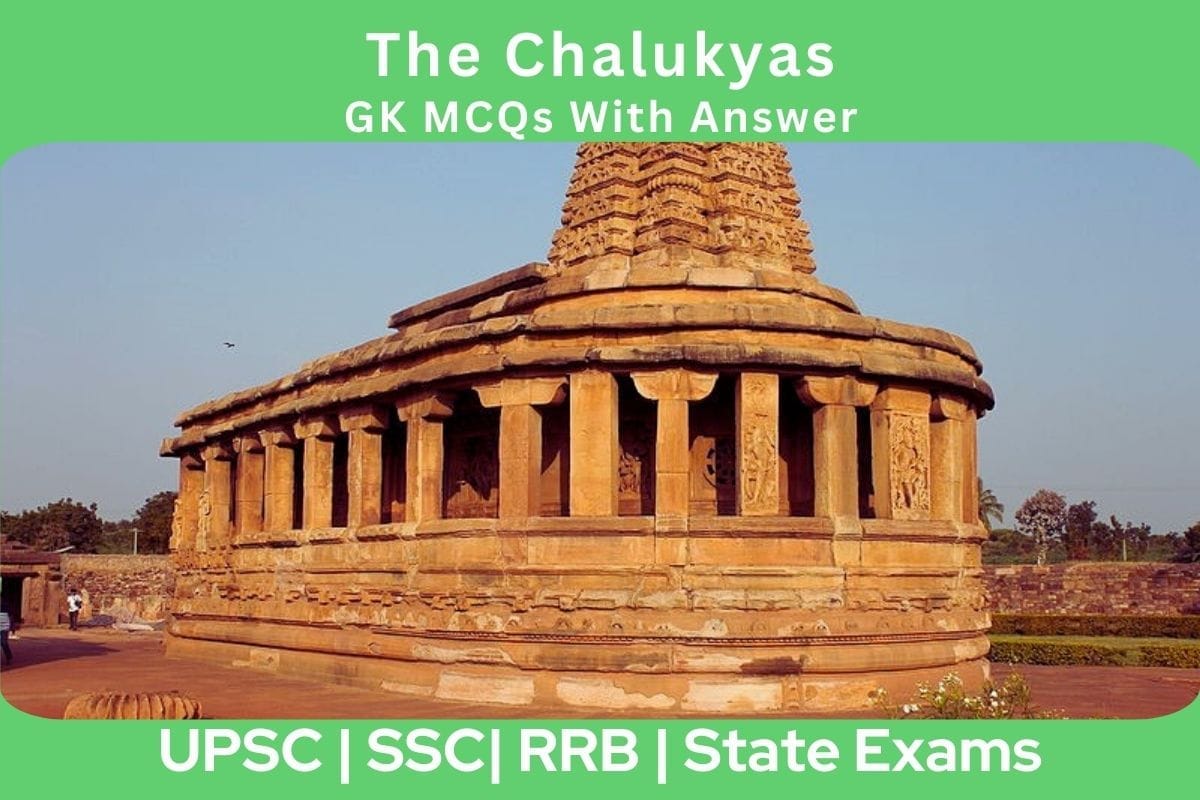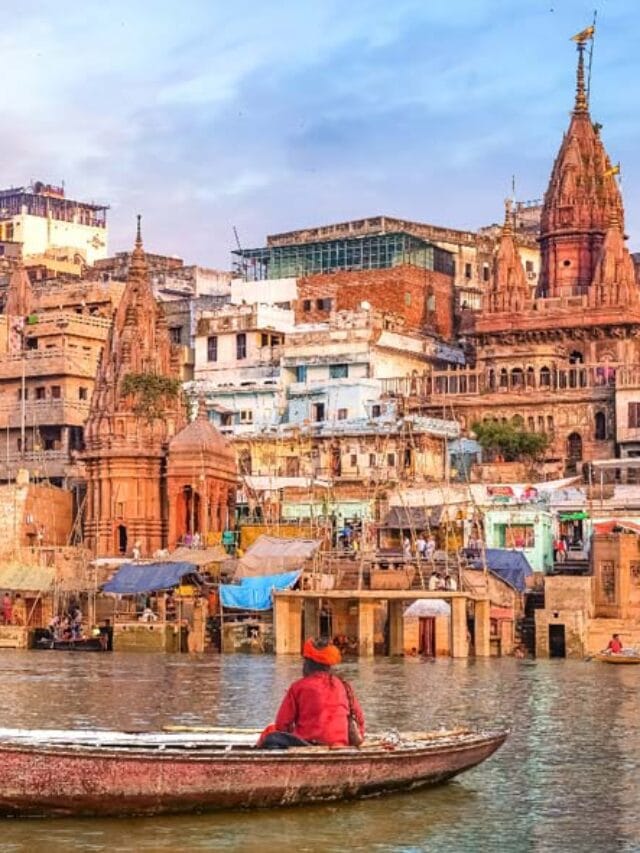
The Chalukyas, a prominent dynasty in Indian history, played a pivotal role in shaping the cultural and political landscape of South India. Spanning from the 6th to the 12th centuries, the Chalukyan Empire left an indelible mark on architecture, art, and governance. This introduction provides a concise overview of their reign, delving into their achievements, rulers, and historical significance.
MCQs with Answers and Explanations:
1. Where was the capital of Chalukyas situated in the western Deccan?
- Ujjain
- Vatapi
- Madurai
- Vellore
Show Answer
Correct Answer: Vatapi
The Chalukyas of Badami, also known as the Western Chalukyas, established their capital at Vatapi, which is modern-day Badami in Karnataka. They were a significant dynasty in South India, ruling the western Deccan region for approximately two centuries from the 6th century CE. The Chalukyas had two other branches, the Eastern Chalukyas of Vengi and the Chalukyas of Lata, who ruled independently in their respective regions.
2. The Early Western Chalukyas who ruled for about two centuries but were ousted by which of the following during the middle of the 8th century?
- Rashtrakutas
- Palas
- Gujara-pratiharas
- None of the above
Show Answer
Correct Answer: Rashtrakutas
The Early Western Chalukyas ruled for about two centuries but were eventually ousted by the Rashtrakutas during the middle of the 8th century. The Rashtrakutas emerged as a powerful dynasty and took control of the region.
3. In northern Maharashtra and Vidarbha, the Vakatakas were followed by which of the following?
- Chalukyas of Badami
- Rashtrakutas
- Eastern Chalukyas
- None of the above
Show Answer
Correct Answer: Chalukyas of Badami
In northern Maharashtra and Vidarbha, the Vakatakas were succeeded by the Chalukyas of Badami. The Chalukyas of Badami played a significant role in the history of Deccan and South India for about two hundred years from the 6th century CE.
4. Which of the following laid the foundations of the fort of Vatapi?
- Jayasimha
- Ranaraga
- Pulkeshin I
- Mangalesh
Show Answer
Correct Answer: Pulkeshin I
Pulkeshin I, one of the notable rulers of the Chalukyan dynasty, is credited with laying the foundations of the fort of Vatapi (modern-day Badami) in the Bijapur District. However, he is not specifically credited with any major conquests during his rule. Pulkeshin I, who ruled from around 540 to 566 CE, was known for performing various shrauta sacrifices, including the ashvamedha sacrifice.
5. Pulkeshin I ruled during which of the following periods?
- 515-536 CE
- 517-546 CE
- 530-556 CE
- 540-566 CE
Show Answer
Correct Answer: 540-566 CE
Pulkeshin I ruled from around 540 to 566 CE. He founded the Chalukya kingdom with its capital at Vatapi (Badami). Pulkeshin I was known for performing various shrauta sacrifices, including the ashvamedha sacrifice.
6. Which of the following was the son of Pulkeshin I?
- Pulkeshin I
- Mangalesha
- Jayasimha
- None of the above
Show Answer
Correct Answer: Mangalesha
Following Pulkeshin I, his son Mangalesha continued the dynasty’s rule from around 566 to 598 CE, with Badami as the capital. Mangalesha’s younger brother, Kirtivarman I, played a significant role in the construction and beautification of the town and is known as “the first maker of Vatapi.”
7. Kirtivarman I ruled in which of the following periods?
- 546-558 CE
- 550-562 CE
- 555-588 CE
- 566-598 CE
Show Answer
Correct Answer: 566-598 CE
In northern Maharashtra and Vidarbha, the Vakatakas were succeeded by the Chalukyas of Badami. The Chalukyas of Badami played a significant role in the history of Deccan and South India for about two hundred years from the 6th century CE.
8. In a war of succession, Pulkeshin II emerged triumphant against which of the following?
- Pulkeshin I
- Kirtivarman I
- Mangalesha
- Vikramaditya I
Show Answer
Correct Answer: Mangalesha
After the death of Kirtivarman I, a war of succession broke out between his brother Mangalesha and his nephew Pulkeshin II. Pulkeshin II emerged triumphant and succeeded Mangalesha. Pulkeshin II, also known as Vallabha, ruled from around 610 to 642 CE, achieving numerous military successes and becoming a renowned ruler in the dynasty’s history. He was the contemporary of Harsha Vardhana and successfully defeated him on the banks of the river Narmada. Pulkeshin II also allied with regional powers and defeated Harsha in 637-638 AD.
9. Which of the following Chalukyan kings succeeded Mangalesha?
- Pulkeshin I
- Pulkeshin II
- Vikramaditya I
- Vinayaditya I
Show Answer
Correct Answer: Pulkeshin II
The Chalukyan King Vikramaditya I succeeded Pulakesin II and pushed the Pallavas out of Badami. He reestablished Chalukya authority over the entire kingdom and achieved victories over successive Pallava rulers, including capturing their capital, Kanchi.
10. Pulkeshin II’s rule is associated with which of the following periods?
- 605-622 CE
- 606-630 CE
- 609-635 CE
- 610-642 CE
Show Answer
Correct Answer: 610-642 CE
Pulkeshin II, also known by several titles including Vallabha, Prithivi-Vallabh, Sri Prithivi-Vallabh, Paramesvara, and Parama-bhagavata, was a prominent Chalukya king who ruled from around 610 to 642 CE. He is regarded as one of the greatest kings of the Chalukyan dynasty.
The Chalukyas Notes for UPSC Exam








Leave a Reply